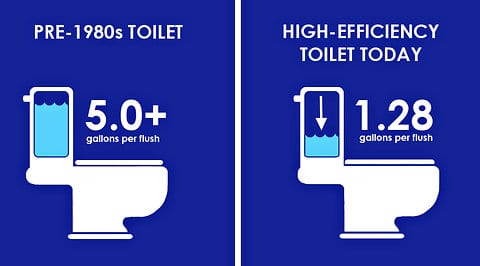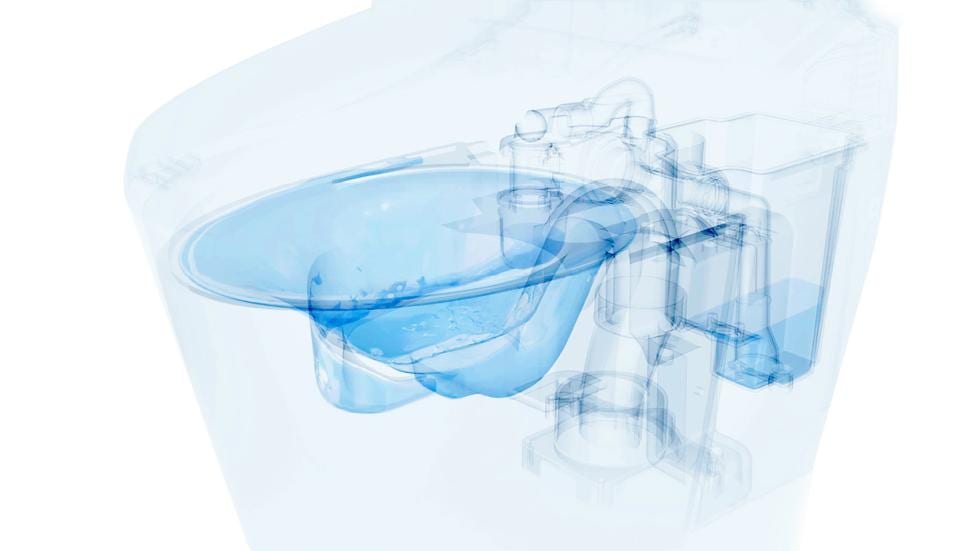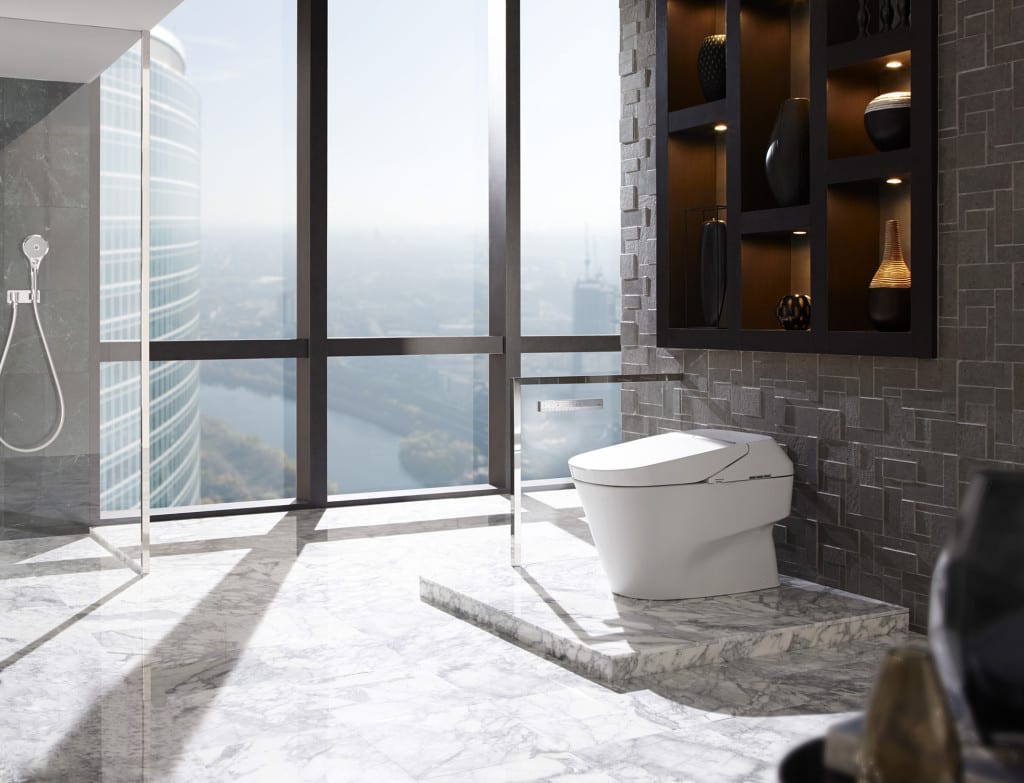As a kitchen and bathroom designer, I help design and specify products for the two rooms that use almost all of a household’s water. Did you know that the toilet, shower and lavatory faucet, consume on average 41 gallons per-person, per-day, or about 60% of a home’s daily indoor use?
And think about this. The water closet, toilet, privy, john – whatever you call it – uses 30% of a home’s daily indoor water use. That is a lot of water!
In 1994, the federal government required that all new toilets produced for home use operate on 1.6 gallons per flush or less (Shepard, 1993). Prior to that, toilets used between 3.5 to 5 gallons per flush. That was a reduction of over 50%, a huge savings.

So, the new law helped save water? Yes, but not at first. To comply with the law, many toilet manufacturers simply changed their valves to flush less water. Often that did not remove the waste, resulting in the toilet being flushed again and again. We were forced to buy toilets that flushed less water, but didn’t work! As many remember, the result wasn’t just multiple flushes, it was also unhappy consumers whose impression of water efficient toilets was, “not in my home!”
Over the last 20 years, I’m happy to tell you that toilet manufacturers have largely remedied the problem, producing what we call in our Industry, HET toilets, or High Efficiency Toilets.
These toilets flush less than the EPA standard of 1.6 GPF at 1.28 GPF. (The EPA labels these as WaterSense toilets, sometimes qualifying them for tax or utility rebates.)
Some HET toilets even feature a dual flush capability. What this means is that 0.8 gallons are used to remove liquid waste and 1.28 GPF to remove solids. Did you know that HET also come in many different shapes, sizes and colors? I guarantee that your designer can find the right style for your newly remodeled bathroom.
Manufacturers have worked together with scientists and engineers to develop a volunteer program called MaP Testing. MaP was developed in 2002-03 in response to the many complaints of the 1990s about the new “low-flow” toilets. Now don’t get confused, MaP testing isn’t the job of an individual to drive around the country side, verifying Google Maps! It is all about verifying that today’s toilets really work. Consumers can search the MaP Testing database to find an effective and water efficient toilet at a price they can afford.
I’ll let you read the details yourself, but you can be assured that MaP testing is realistic and concerns itself with the ability of toilets to clean thoroughly with a single flush. It’s always disappointing when toilet manufacturers tout the power of their products by demonstrations of flushing golf balls, and other objects which don’t share the same characteristics as waste. Any toilet can suck down a solid object. Just ask a neighbor who has young children with toys!

So, what’s the state of the art in high-tech toilets? Arguably, the Toto Neorest 750, showcased at KBIS 2014, is the most effective toilet on the market. Using a miserly 1 GPF, the Neorest’s multi-stage cleaning system is a technological marvel. Let’s start with the Hydrotect titanium dioxide and zirconium coating on the bowl that’s as slippery as Teflon but is a beautiful iridescent white.
Next, the toilet’s electronic sensors pre-mist the bowl with water when you sit down, making it more difficult for anything to attach itself to the bowl. When the toilet is flushed, two engineered jets create a relatively quiet but powerful whirlpool effect that circles the bowl multiple times rather than rinsing straight down from opening along the rim of the bowl, like traditional toilets. Finally, once you’re finished, the toilet seat closes itself and an ultraviolet light comes on to further break down any remaining organic material.

The cost for this technological wonder that also has an integrated electronically controlled bidet? Just $10,000 . . .without installation.
Water is one of life’s precious resources. We, in the United States, use clean water flush our waste. I venture to say that many of us take this luxury for granted. While the Susquehanna River from my view in Harrisburg might seem full, much of the West is suffering from a historic period of drought. In fact, California is experiencing the worst drought since records were first kept in the 1800’s. And if you shop for groceries, you’ve seen the impact of the drought on rising produce prices.

When you consider remodeling your powder room or master bathroom and the designer starts to talk to you about HET toilets, know that today they work well, conserve water and are affordable. Selecting an HET toilet is an easy, pain-free way to help save water.
